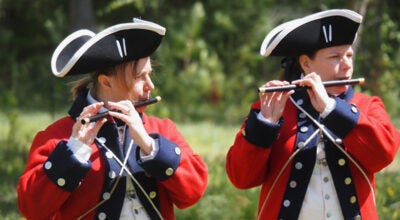OLF: No frontrunner in preferred sites
Published 8:36 am Wednesday, May 20, 2009
WAKEFIELD, Va. — Capacity is behind the need to construct an Outlying Landing Field in the region, a Navy officer told citizens during a meeting held May 18.
Cmdr. Matthew Baker, of the OLF project office for U.S. Fleet Forces Command, said a draft environmental impact statement on the five sites under consideration is nearing completion and that there is no frontrunner.
Baker told a crowd of about 50 people assembled at the Wakefield Foundation building that current capacity issues at Naval Air Station Oceana and Naval Station Norfolk Chambers Field are forcing the Navy to send some of its training aircraft, specifically E-2 Hawkeyes, to Naval Air Station Cecil Field in Jacksonville, Fla., five times a year. While at Cecil, the planes use an OLF called Whitehouse Field for training.
“Right now to work around the capacity issue, we take all of the E-2s and send them out of town for two weeks before they go out to the ship,” Baker said. “That accounts for a tremendous number of the (field carrier landing practices) we have to do.”
Baker added: “We fly around the clock right now, and we export roughly a third some of our operations that we can’t do at (Naval Auxiliary Landing Field) Fentress. It is absolutely inefficient to send five airplanes down to Florida (because) the five airplanes that we send down there for two weeks are now not available up here for other training missions that they may not be available to do down in Florida. It’s a very inefficient way to use airplanes and people.”
The Navy said the evolution of Oceana also contributed to the capacity problem.
Retired Navy Cmdr. Rich Catoire, a consultant with the McLean, Va.-based firm Booz Allen Hamilton, said Fentress and Oceana were both OLFs constructed in 1941-42 during World War II to support Chambers Field, which was then called Naval Air Station Norfolk. Since that time, Catoire said, Oceana became its own naval air station and now Fentress serves as OLF to both Oceana and Chambers.
“So pre-World War II, you have one naval air station with two outlying landing fields,” Catoire said. “Now you have one outlying landing field for two naval air stations.”
Baker said there is not yet a preferred site for the OLF, a practice field where Navy pilots would simulate landings on an aircraft carrier in the dark.
“We have not done a comparative analysis,” Baker said. “Once we’re completed with all of our studies then we’ll do the comparative analysis. Right now all five sites are still absolutely equals.”
When asked how many alternative sites could be announced this summer along with the preferred site, Baker said that decision is up to Rear Adm. David Anderson, who heads the OLF project.
“He could announce one preferred alternative; he could say all five are still on the table,” Baker said. “There is a possibility he won’t have any favorites. I can’t speak for what the admiral will decide to do.”
Ted Brown, media relations officer for the Navy’s Fleet Public Affairs Office, said, “I would suggest, based on what I’ve heard (Anderson) say, that we are likely to have one or two or three preferred alternatives. I think it’s pretty safe to say that we are going to have some preferred alternatives in the draft.”
Baker added, “We need to do the comparative analysis. Once we’ve done the individual analysis, then we do the comparison so that (Anderson) can make that decision.”
The Navy has identified five sites, three in Virginia and two in North Carolina, for the proposed OLF. The three Virginia sites are Cabin Point, Dory and Mason. The Cabin Point site is near the confluence of Surry, Prince George and Sussex counties, while the Dory and Mason sites straddle both Sussex and Southampton counties.
In North Carolina, the Sandbanks site is mostly in Gates County, but part of Hertford County would also be affected. The Hale’s Lake site comprises parts of Camden and Currituck counties.
(Charlie Passut is a Staff Writer for the Tidewater News in Franklin, Va., a sister publication of the Roanoke-Chowan News-Herald and Gates County Index.)


